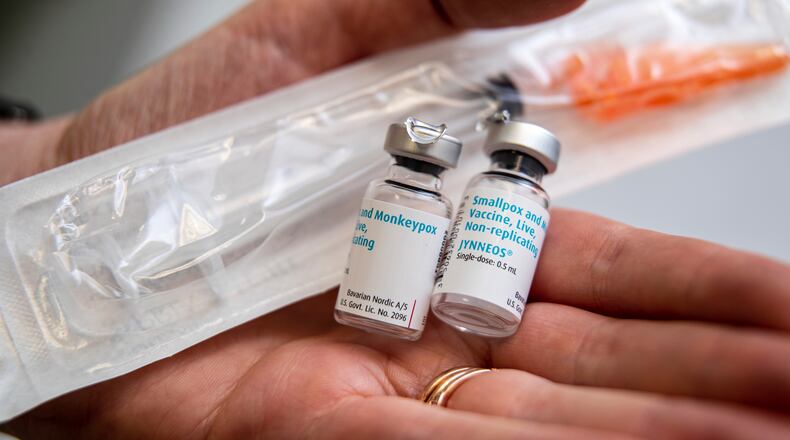At-risk groups include:
- Men who have sex with men, or any male-identified gender diverse people, who in the last two weeks have had:
- Multiple sexual partners
- Anonymous sexual partners
- Attended a sex party
- People of any gender or sexual orientation who exchange sex for money, shelter, food and/or other goods or needs
Anyone in the above at-risk groups can register for the vaccine at Public Health’s waitlist here or at www.phdmc.org. As more vaccines become available, Public Health will contact individuals to schedule an appointment at the Public Health Clinic at the Reibold Building, 117 S. Main St. in Dayton.
Anyone who does not have access to the internet or needs an interpreter or other assistance can call 937-225-5700.
Public Health’s criteria for vaccination may change as supplies increase. The agency is also helping notify people with close contacts of those who tested positive for monkeypox and helping them monitor for symptoms. Some close contacts may be eligible for the vaccine to help prevent monkeypox or decrease symptoms.
The virus typically begins with flu-like symptoms and the swelling of lymph nodes before progressing to a rash. Recent cases across the country appear less likely to have the initial flu-like symptoms or lymph node swelling and the rash, which can look like pimples or blisters, according to Public Health.
Monkeypox can spread by person-to-person through direct contact with the rash, scabs or body fluids. It also can spread through respiratory secretions during prolonged face-to-face contact or during intimate physical contact, including kissing, cuddling or sex. Pregnant people can spread the virus to their fetus through the placenta, according to Public Health.
People can also contract the virus by touching items, such as clothing or linens, that touched the rash or body fluids. Monkeypox can spread from infected animals to people via a scratch or bite, or by eating meat or using products from an infected animal.
Monkeypox is contagious from the time symptoms begin until the rash has fully healed and a fresh layer of skin has formed. It typically lasts two to four weeks. In some cases, medication is available to those who have the virus.
There have been 147 cases of monkeypox reported in Ohio, including three in Montgomery County, according to the Ohio Department of Health. There have been nine hospitalizations and zero deaths in the state.
About the Author
